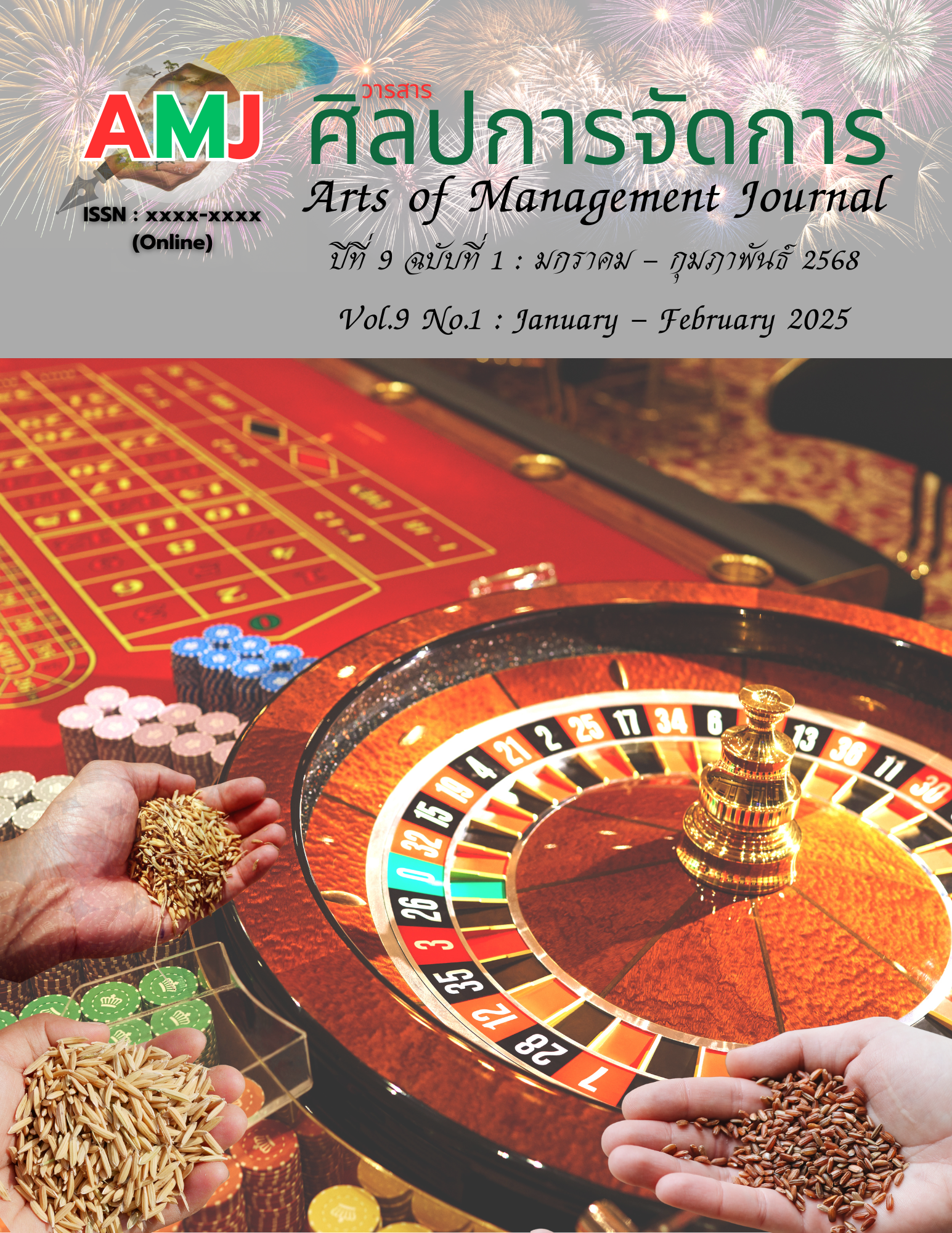Communication Strategies to Promote Sustainable Community Tourism of the Pak Nam Prasae Community, Klaeng District, Rayong Province.
Main Article Content
Abstract
This article aims to: 1. study the communication potential for promoting sustainable community-based tourism in the Pak Nam Prasae community, Klaeng District, Rayong Province, 2. develop communication strategies to promote sustainable community-based tourism in the Pak Nam Prasae community, Klaeng District, Rayong Province, and 3. produce promotional media to support sustainable community-based tourism in the Pak Nam Prasae community, Klaeng District, Rayong Province. The research employs a mixed-methods approach. Data collection tools include interviews for content analysis and questionnaires using basic statistics. The research findings are as follows: 1. Tourist Behavior and Community Communication Challenges Tourists primarily use social media as the main channel for accessing travel information, with the most sought-after content being details about local restaurants and products. Current community communication efforts are insufficiently comprehensive. Recommendations include utilizing video and infographic media to improve outreach. The community lacks adequate digital and online media for promoting tourist attractions, and the existing community tourism map is outdated, leading to ineffective information dissemination to target audiences. 2. Proposed Communication Strategies. Key strategies for promoting sustainable community-based tourism in Pak Nam Prasae include creating short video content and graphic-based tourist maps. 3. Media Production The project produced five short video clips and one infographic-based community tourism map to support sustainable community-based tourism in Pak Nam Prasae, Klaeng District, Rayong Province.
Article Details

This work is licensed under a Creative Commons Attribution-NonCommercial-NoDerivatives 4.0 International License.
Views and opinions appearing in articles in the Journal of Arts of Management It is the responsibility of the author of the article. and does not constitute the view and responsibility of the editorial team I agree that the article is copyright of the Arts and Management Journal.
References
Bunleas, P., Limiransuksakul, M., & Suriyawong, K. (2024). Developed short video clips on TikTok employing nano influencers to promote community enterprise tourism at Ban Tham Suea homestay in Kaeng Krachan District, Phetchaburi Province. Journal of Innovation in Educational Management and Research, (6)1, 57-70. https://so02.tci-thaijo.org/ index.php/jemri/article/view/266401
Campos, M. J. Z., Hall, C. M., Lindo, P., & Vanderschaeghe, M. (2011). Can community-based tourism contribute to development and poverty alleviation? Lessons from Nicaragua. Current Issues in Tourism, 14(8), 725–749. DOI:10.1080/13683500.2011.559200
Chung, N., & Koo, C. (2015). The Use of Social Media in Travel Information Search. Telematics and Informatics, 32, 215-229. https://doi.org/10.1016/j.tele.2014.08.005
Choe, J. Y. J., & Kim, S. S. (2018). Effects of tourists’ local food consumption value on attitude, food destination image, and behavioral intention. International Journal of Hospitality Management, 71, 1-10. https://doi.org/10.1016/j.ijhm.2017.11.007
David, F. R. (2015). Strategic management: concepts and cases (15th ed.). Pearson Education.
Devito, J. A. (2018). The interpersonal communication book (15th ed.). Pearson.
Giampiccoli, A., & Saayman, M. (2018). Community-based tourism development model and community participation. African Journal of Hospitality, Tourism and Leisure, 7(4), 1–27.
Goodwin, H., & Santilli, R. (2009). Community-based tourism: A success?. In ICRT Occasional Paper 11. International Centre for Responsible Tourism, Leeds Metropolitan University.
Jones, T. (2023). Communication theories and their applications in modern contexts. Journal of Communication Studies, 45(2), 101-120.
Johnson, P. (2019). Communication strategies in the digital age. Oxford University.
Klaysang, S. (2017). The development of video and online media to promote participatory marketing and tourism in Taling Chan, Bangkok. Humanities and Social Sciences, 12(3), 285-296. https://so06.tci-thaijo.org/index.php/vrurdihsjournal/article/view/107946
Klongdee, K., & Chanamool, N. (2021). Development of Motion Graphic Media Introduction to Ecotourism Nong Bua Community, Chanthaburi. Journal of Applied Information Technology, 7(2), 75-83. https://ph02.tci-thaijo.org/index.php/project-journal/article/view/245034
Leung, D., Law, R., Van Hoof, H., & Buhalis, D. (2013). Social media in tourism and hospitality: A literature review. Journal of Travel & Tourism Marketing, 30(1-2), 3-22. DOI:10.1080/10548408.2013.750919
Pooksawat, A., & Sattararuchi, K. (2013). Public relations under the social media trend. Journal of Public Relations and Advertising, 6(2), 24-38. https://so03.tci-thaijo.org/index.php/jprad/article/view/134052
Suntikul, W., & Dorji, U. (2016). Challenges of community-based tourism in Bhutan. Tourism Management Perspectives, 20, 73–79.
Swarbrooke, J., & Horner, S. (2012). Business travel and tourism (2nd ed.). Routledge.
Smith, J. (2020). Effective business communication. McGraw-Hill.
Pantham, S., & Chaimadan, C. (2020). A study of the management model of cultural tourism communities in the Eastern Special Development Zone: a case study of Pak Nam Prasae community, Rayong province. Suan Dusit University Graduate School, 16(3), 89-106.
Kunakornbodin, S. et al. (2006). Potential and readiness of local restaurants to accommodate tourists in Chiang Rai province. Thailand Research Fund.
Tourism Authority of Thailand. (2020, July). Thailand tourism situation report 2020. https://www.tourismthailand.org/home
Tolkach, D., King, B., & Pearlman, M. (2013). An exploratory study of community-based tourism in Thailand. Tourism Planning & Development, 10(2), 175–190.
Wilcox, D. L., Cameron, G. T., & Reber, B. H. (2013). Public relations: Strategies and tactics (10th ed.). Pearson.
Yoo, K. H., & Gretzel, U. (2011). Influence of personality on travel-related consumer-generated media creation. Computers in Human Behavior, 27, 609–621. https://doi.org/10.1016/j.chb.2010.05.002


